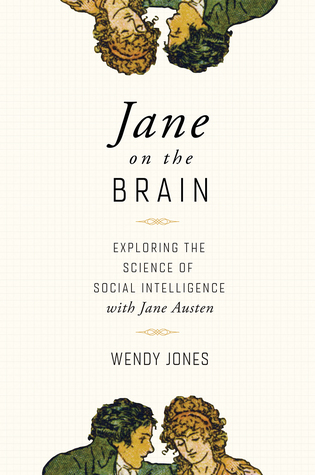I spent the last few days slowly reading this book because it was a much harder read than I expected. I saw “exploring the science of social intelligence with Jane Austen” and thought it would be one of those easy-to-read intro book, but this is actually pretty intense.
Like the subtitle says, this is all about social science. It starts off with what the mind is and how we think (which to be honest I still don’t quite understand), and then moves on to study topics like love, empathy, and empathy disorders (Borderline Personality Disorder, Antisocial Personality Disorder, and Narcissistic Personality Disorder), ending with a detailed study of Anne from Persuasion, who has “the most developed sense of empathy” out of all the Austen characters.
Throughout the entire book, the author draws heavily on Austen’s characters to explain the various concepts, although they aren’t the exclusive source of examples. So this is definitely a book that gives Austen the spotlight.
For me, I enjoyed the ‘topical’ chapters on relationships and how childhood affects character a lot more than the opening stuff on how the mind works. I know the opening stuff is the foundation, but I found the latter half to be a lot easier to understand.
I really like the section on attachment, where she explains the three different types. There’s:
1. Preoccupied attachment, which is Marianne from Sense and Sensibility. Marianne is unable to self-regulate her emotions and her insecurity makes her distraught when Willoughby leaves and cuts her, sending her into depression and a near brush with death.
2. Secure attachment, which is Elinor from Sense and Sensibility. Although she feels things deeply, she can cope with her strong feelings and the news of Edward’s secret engagement shocks her but doesn’t devastate her.
3. Dismissive attachment, which is Darcy from Pride and Prejudice. Darcy’s classic English stiff upper lip means that he “would have developed little tolerance for excitement and therefore would have tended to overregulate in order to control his anxiety.”
I also thought that the point on Austen’s Free Indirect Discourse narrative style and how it has a lot in common with empathy to be very interesting! It’s a pity it’s just a small section in the epilogue because I would have loved to read a chapter on it.
Basically, if you’re a fan of Austen and think you can handle the science in this book, you should totally read it. It’s pretty heavy, but it’s also a really good analysis of Austen’s characters (even though this is technically not a lit book)
Tuesday, May 8, 2018
Subscribe to:
Post Comments
(
Atom
)


This sounds fascinating. I love this kind of stuff, and think I might like it. I just feel I might do better with it if I had read more of Austen's work . . .
ReplyDeleteWell, if you've read most of her main ones (P&P, Persuasion, Sense & Sensibility), I think you might be okay! She does go into quite a lot of detail about the characters, so I found myself following the argument without having to refresh my memory(:
Delete